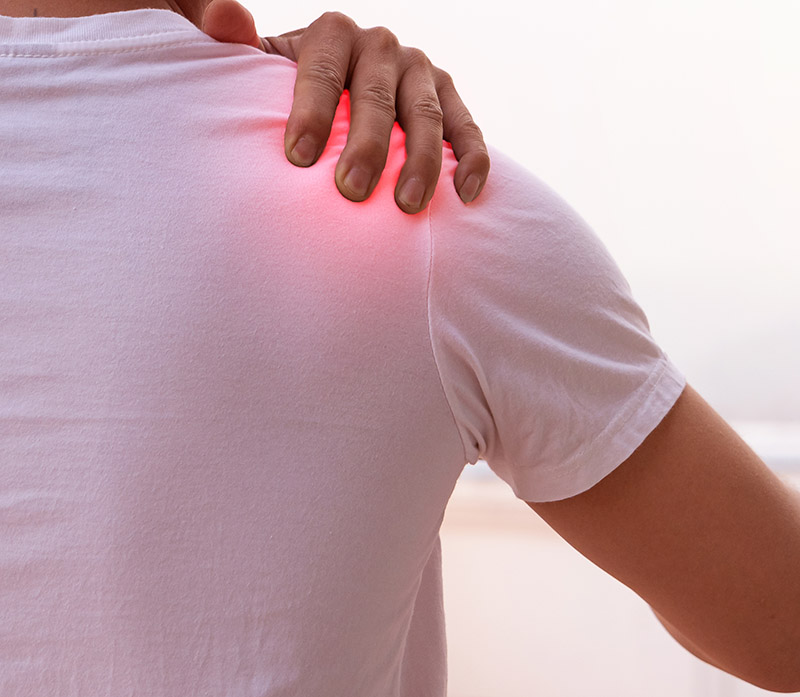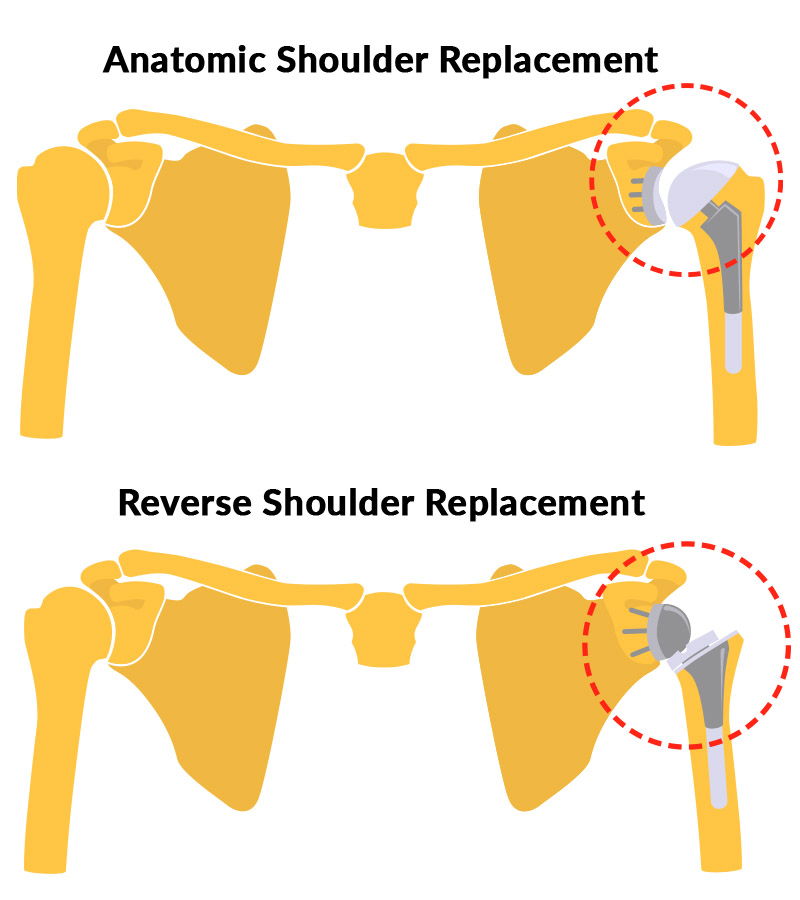

The purpose of shoulder replacement surgery is to remove damaged areas of bone and replace them with surgical implants.
Because your shoulders get a lot of usage – whether through sports or day-to-day activity – this leaves them vulnerable to injury, overuse, or the aging process. When damage occurs to the shoulder joint, it can cause pain, weakness, and stiffness.
Dr. Hersch performs shoulder replacement surgery to relieve this pain and to restore motion. Dr. Hersch typically uses GPS-guided shoulder navigation technology to aid in implant placement for improved control and outcomes.

Some of the conditions that damage the shoulder joint, which may then result in shoulder replacement surgery include:
There are three basic types of shoulder replacement surgeries. Which one Dr. Hersch recommends for you depends on the type of joint damage you have. These replacement options are:
– Anatomic total shoulder replacement – With this procedure, Dr. Hersch replaces both the ball and the socket. The implants he uses resemble the natural shape of the bones.
– Reverse total shoulder replacement – In this procedure, Dr. Hersch also replaces both the ball and the socket are replaced, but the implants are reversed. The ball is attached to the shoulder blade and the socket is attached to the upper arm bone. This option typically is preferred if the rotator cuff is severely damaged.
– Partial shoulder replacement – Through this procedure, Dr. Hersch only replaces the ball of the joint. He may recommend this procedure when only the ball side of the joint is damaged.
